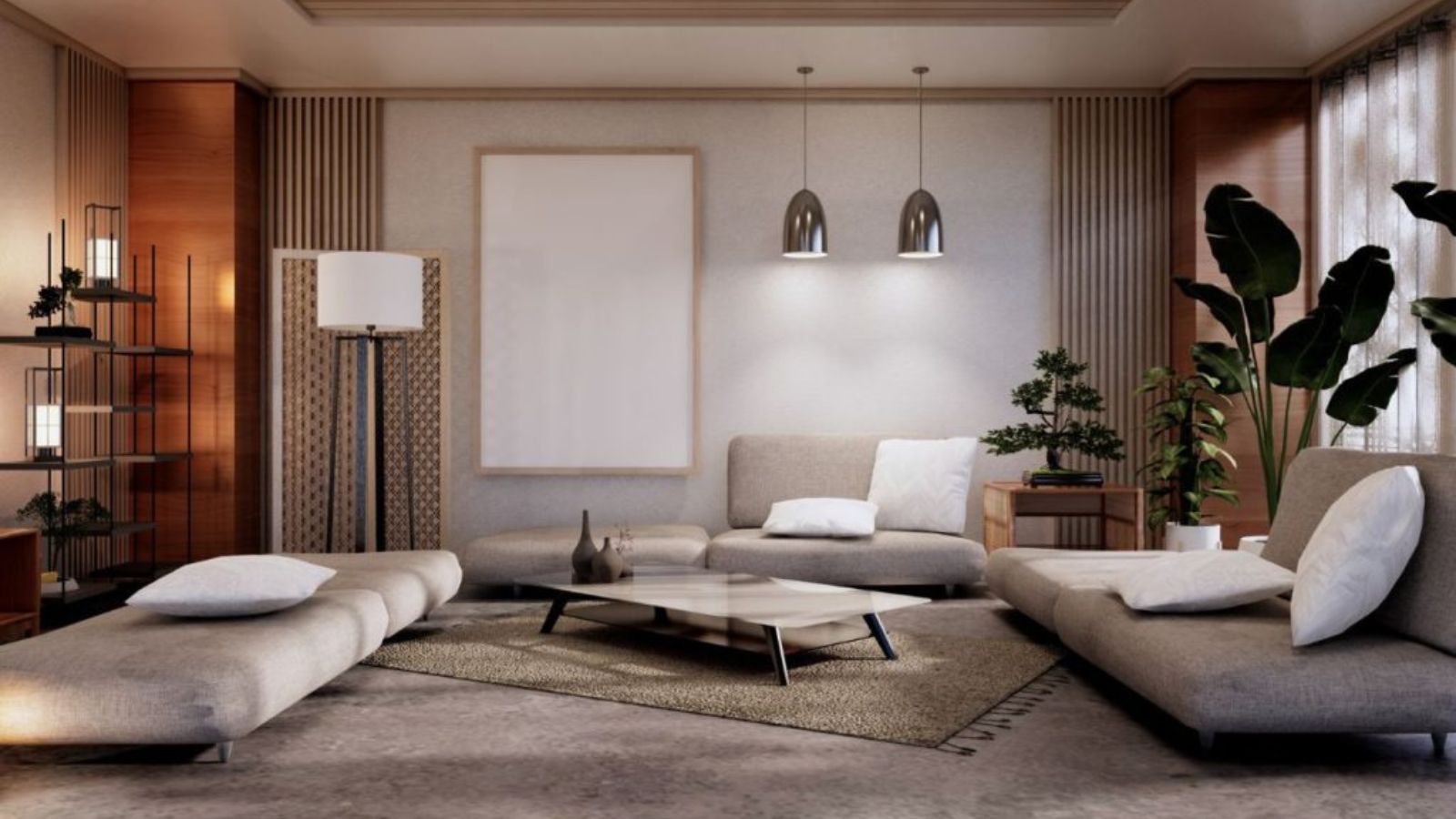This trend is increasingly becoming popular among homeowners and designers alike, who are drawn to its understated elegance. Whether you’re a design aficionado or just someone looking to revamp your space, understanding the principles of modern Japanese interior design can transform your home into a Zen oasis.
Modern Japanese Interior Design
Journeying back to the origins of modern Japanese interior design, one cannot help but notice how it’s deeply rooted in the country’s ancient culture. Its development has been influenced greatly by Japan’s philosophy and Zen Buddhism.
It’s historically well-known how Japanese culture values harmony, respect, purity, and simplicity. These core values translate into their interiors as well, fostering a minimalist, functional, and serene design, not to forget their deep connection to nature.
The term “Zen” originated from a school of Mahayana Buddhism that values meditation, insight into Buddha’s nature, and expression of this insight in daily life. It centred on finding inner peace and tranquillity, which was inspired by simplicity and nature. These Zen principles found their place in Japanese interior design, influencing aesthetics and materials, soaking their spaces with a sense of peace and tranquillity.
Influenced by both traditional culture and Zen aesthetics, Japanese interior design began to form its own identity, distinctive and iconic. However, it was not until the post-war period of the 20th century, that Japanese interior design started to gain global recognition. This was a time when the West began to truly appreciate the minimalist and functional design the Japanese had to offer, thus giving birth to what we today recognise as modern Japanese interior design.
Principles of Modern Japanese Interior Design
When speaking of modern Japanese interior design, key principles revolve around peace, purity, and simple beauty — saturating spaces both visually and experientially. Aesthetically, the emphasis is on minimalism; however, it’s the carefully crafted multifunctionality of individual design elements that truly exemplifies the ethos of this design style.
Simplicity is a defining characteristic of Japanese interior design. Achieving simplicity involves more than just decluttering; it encompasses a profound appreciation of form and order. Structural elements are often left bare, bringing attention to architectural details, while decorative elements are kept to a minimum, subtly enhancing the space rather than overpowering it.
Harmony in Japanese design is rooted in the cultural reverence towards nature and the desire to create balanced spaces. Japanese design harmoniously combines indoor and outdoor space, producing a seamless experience that encourages peaceful living. It’s seen in the use of materials and furnishings that are all in dialogue with the natural world.
Functionality reigns supreme in this design genre. Noteworthy are the multi-purpose spaces and flexible furnishings, accommodating varying needs without diminishing style or comfort. This principle is a testament to the ingenious utilisation of space amidst Japan’s dense population and geographic constraints.
Elements of Modern Japanese Interior Design
There’s a distinctive elegance that outshines Japanese design. It’s secured by a foundation of several core elements that define modern Japanese interior design. Let’s dive deeper.
Minimalism is paramount to Japanese design. Stemming from traditional values of simplicity and austerity, Japanese aesthetics yield spaces that are minimalistic in nature. Yet, they embody an undeniable richness– a testament to the principle that less is more.
Multifunctionality, part and parcel to the minimalist approach, plays a vital role. Furniture and fixtures in a traditional Japanese home are designed to be used in various ways. For instance, tatami mats serve as flooring during the day and bedding at night.
Alongside, harmony is also a key feature. Japanese interior design doesn’t segregate spaces–it unifies them. You’ll likely find a free-flowing layout that subtly distinguishes different areas, but maintains an overarching sense of unity.
A third distinctive element reflects the Japanese appreciation for the natural world. Japanese design makes room for nature. Whether it’s expansive windows that invite the outdoors in, or an internal courtyard–interior spaces often blur the lines between indoor and outdoor environments.
These elements are complemented by Japanese design’s inclination towards simple beauty and purity. Subdued colours, clean lines and natural materials are the norm. Here, beauty is not determined by ornate details or bold colours. Sleek furniture, handcrafted objects, and time-tested natural materials create an aesthetic of understated sophistication.
